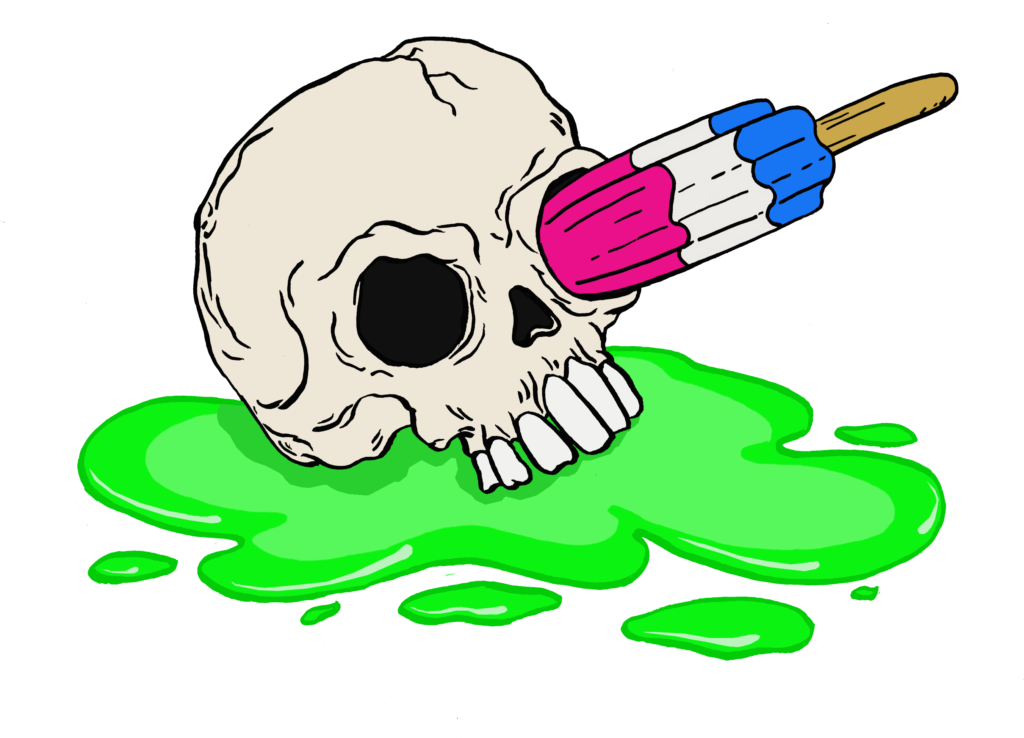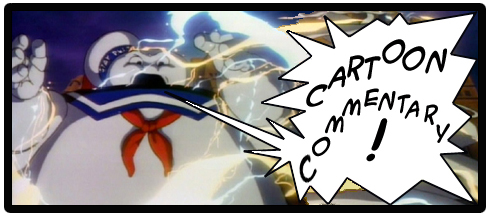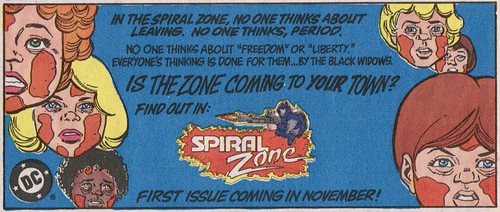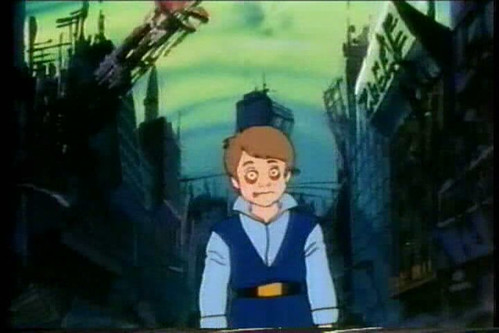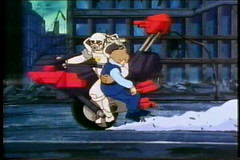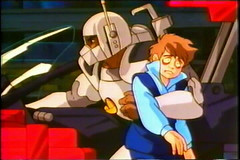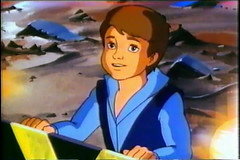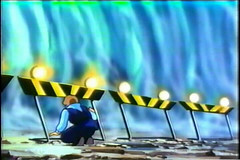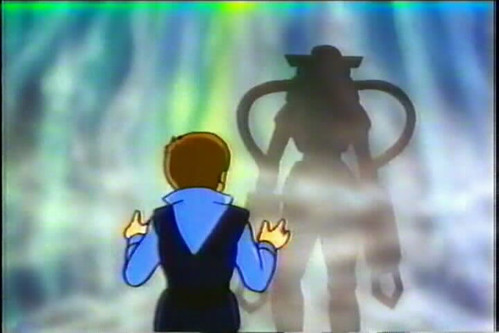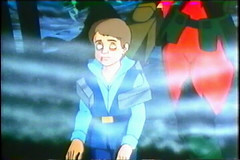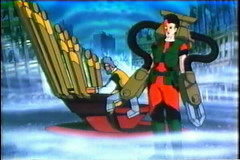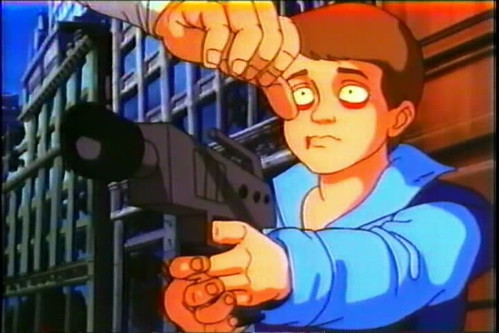Before I step away from the Spiral Zone for awhile I thought I’d talk about another interesting angle this series took with its advertising and marketing. Though the Spiral Zone franchise had its share of merchandising (with a small toy line and lunch boxes at least), it potentially reached most of it’s audience outside of the cartoon through the 4-issue DC Comics mini series and its subsequent comic ads in other DC titles back in 1987. It’s an assumption, but one based on the idea that the comics had a greater reach at the time as they were offered in so many more locations than the toys, and even if the actual SZ comics weren’t connecting with people, comic readers most likely saw the ads while flipping through their favorite titles…
What sort of fascinates me about this advertising is that DC and the ad designers chose to reuse a striking panel from the first issue of the comic featuring the character Tank worrying about his boy who is held captive in the zone. He’s imaging all the other children sucked into zombie-like obedience to Overload, which Carmine Infantino chose a bunch of ghostly floating heads to illustrate the point. It’s a striking image, more so in the actual comic than in the ad above as there are many more children depicted so it really nails that feeling of hopelessness and loss. I think the idea to highlight this panel was both genius and frightening as a way to draw potential young readers into the series by making them the prime candidates for zonification. Sort of a call to “Read the issue and watch as the Zone Riders take on the Black Widows, or Overload might be coming for you!”
This is sort of a similar tatic used in the editing of the opening sequence for the cartoon series. After the opening scene with Overload warning the viewers to “surrender or pay the consequences”, there is a barrage of imagery and one bit in particular with is really eye catching. It involves a short bit where a zoned child is standing in the path of Max Jones as he’s speeding by on his mono-cycle. Just as he’s about to hit the kid he swerves a bit and garbs him, taking him along on a trip out of the zone…
The totally empty and slightly sad expression on the kid really sells the danger of the Spiral Zone and it’s a bit harsher in terms of disturbing imagery than in your typical 80s cartoon. It reminds me of some of the darker 80s kids flicks like The Lady in White, Explorers (at least some of the family life subtext behind the Darren Woods character), or more specifically, Something Wicked This Way Comes. It can be really unsettling to watch children having to deal with the problems of adults, in particular with the risk of imprisonment, slavery or death, and that’s sort of what’s touched on it the Spiral Zone. The opening credits scene with the kid getting scooped up by Max Jones comes from the series pilot episode called Mission into Evil…
The episode opens with a kid out shopping with his mother at the edge of the zone territory. Even though there are a bunch of signs and barricades “blocking” entrance into the mists of the zone, the kid wanders over to take a peek and is surprised to hear the faint lilting tune of circus music being played on a harpsichord..
Not able to fight his curiosity the kid gets close enough to the zone that he’s easily snatched up by Duchess Dire and pulled into the murky mists to be zonified. This sequence feels like it borrows heavily from the influence of Something Wicked and the lure of the circus that two boys just can’t fight. What’s weirder and even more disturbing is that the boy is left alone to wander the zone, waiting from any possible orders from Overloard. I guess in a way it’s also riffing on the Pinocchio story as well.
There’s another disturbing turn in this episode after the child is brought out of the zone. Even though the Zone Riders saved him, he was still under the influence of Overlord and at one point he gets his hands on a laser pistol which he then levels at the heroes. Though it’s easily taken from him, the imagery is still weirdly out of bounds for 80s cartoons, and it’s an example of how far television animation had come by 1987.
